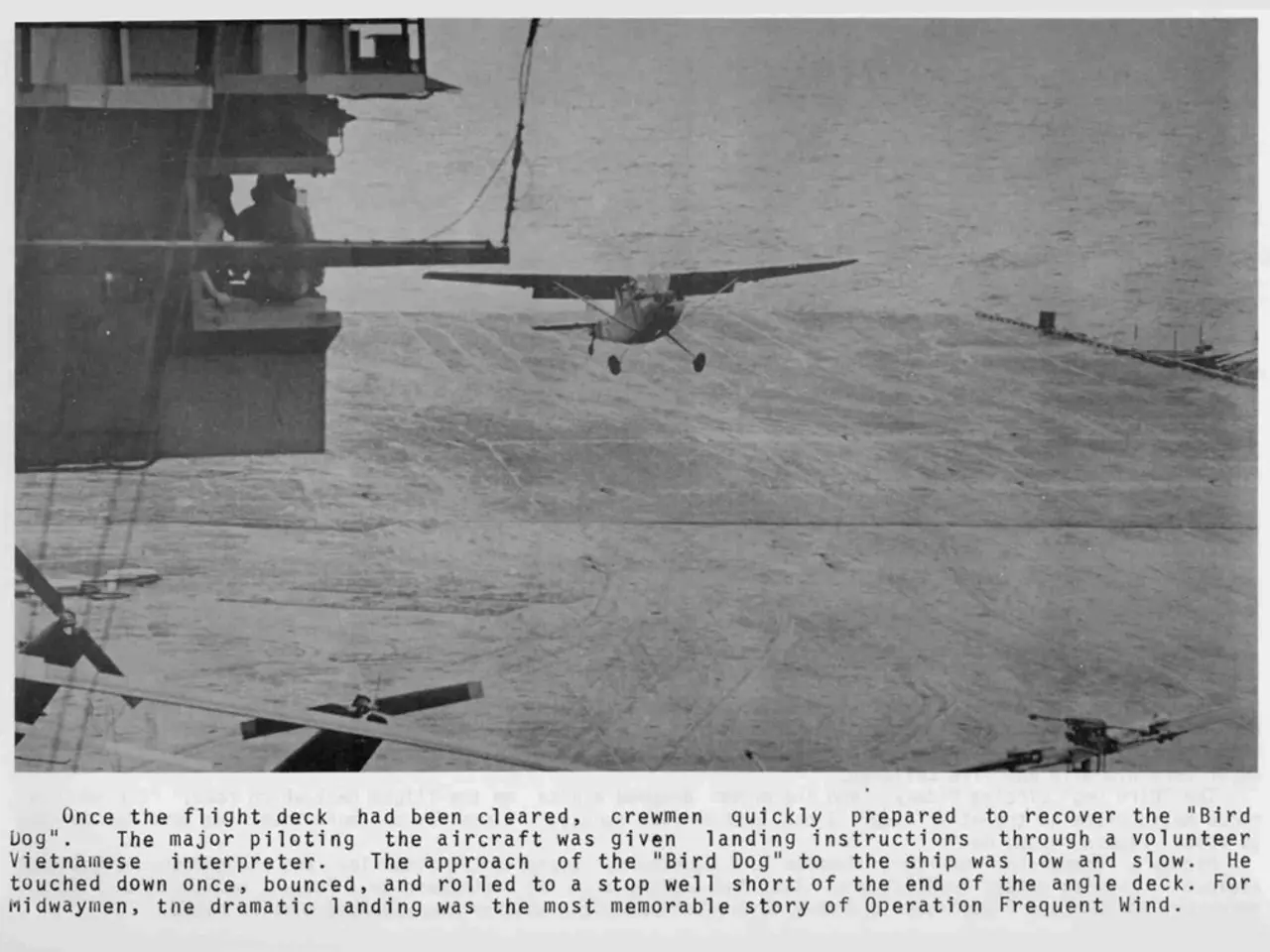Indian Air Force Leader Affirms Neutralization of 'Balakot Ghost' during Operation Sindoor, Confirms Destruction of 5 Pakistani Jets
Air Chief Marshal Amar Preet Singh, in a detailed lecture, provided insights into Operation Sindoor, the Indian Air Force's (IAF) response to the terror attack in Pulwama, Jammu and Kashmir. The operation marked the largest recorded surface-to-air missile kill by India, according to the Air Chief Marshal.
The IAF successfully shot down five Pakistani fighter jets and one large airborne early warning/control (AEW&C) or ELINT aircraft at a distance of about 300 kilometers. This engagement, confirmed by international military aviation experts, set a world record for surface-to-air missile engagement.
Key targets during the operation included the Shahbaz Jacobabad airfield, where an F-16 hangar was partially destroyed, likely damaging several aircraft inside. Additionally, two command and control centers (Murid and Chaklala) and at least six radar installations were successfully targeted. The AEW&C aircraft was destroyed on the ground along with a few F-16s under maintenance.
The operation was conducted with integrated multi-service coordination and political backing without any operational restrictions. The Russian-made S-400 surface-to-air missile system played a significant role in the success of Operation Sindoor, preventing Pakistani aircraft and UAVs from approaching the Indian defense system.
Air Chief Marshal Singh emphasized the importance of terminating a war and stopping further escalation. He also highlighted the role of the National Security Advisor Ajit Doval in facilitating coordination among various agencies and forces.
Visual evidence of the AWC hangar, which was flattened after the Indian attack, was presented during the lecture. The primacy of air warfare was reaffirmed by Operation Sindoor, demonstrating its ability to react quickly, attack deep inside with precision, and achieve objectives without causing collateral damage.
The Balakot air strike, a part of Operation Sindoor, targeted a training camp of the Jaish-e-Mohammad (JeM) terror group. During the operation, a large number of Unmanned Aerial Vehicles (UAVs), drones, and some of their missiles fell into the Indian territory without causing any damage to Indian installations.
The Air Chief Marshal asserted that one of the major reasons behind the success of the operation was "political will". He also refuted political claims that the air force faced restrictions during the operation.
Opposition leaders, including Rahul Gandhi, criticized the government for agreeing to a ceasefire when the Indian forces were gaining the upper hand against Pakistan. The IAF chief stated that the Sargodha air base in Pakistan was targeted during Operation Sindoor, with the aim of obtaining information on F-16s.
In summary, Operation Sindoor was a significant operation that demonstrated India's capability to respond decisively to cross-border terrorism. The operation aimed to destroy terror infrastructure, neutralize key operatives, and send a clear message that such acts would invite decisive retaliation. The success of the operation was due to the integrated multi-service coordination, political backing, and the use of advanced technology like the S-400 surface-to-air missile system.
Sports news reported a success story in air warfare with the conclusion of Operation Sindoor, showcasing India's ability to respond decisively to conflicts like Pulwama. Amidst the politics, the importance of general news regarding war-and-conflicts was emphasized by the Air Chief Marshal, particularly in the context of maintaining international peace.







